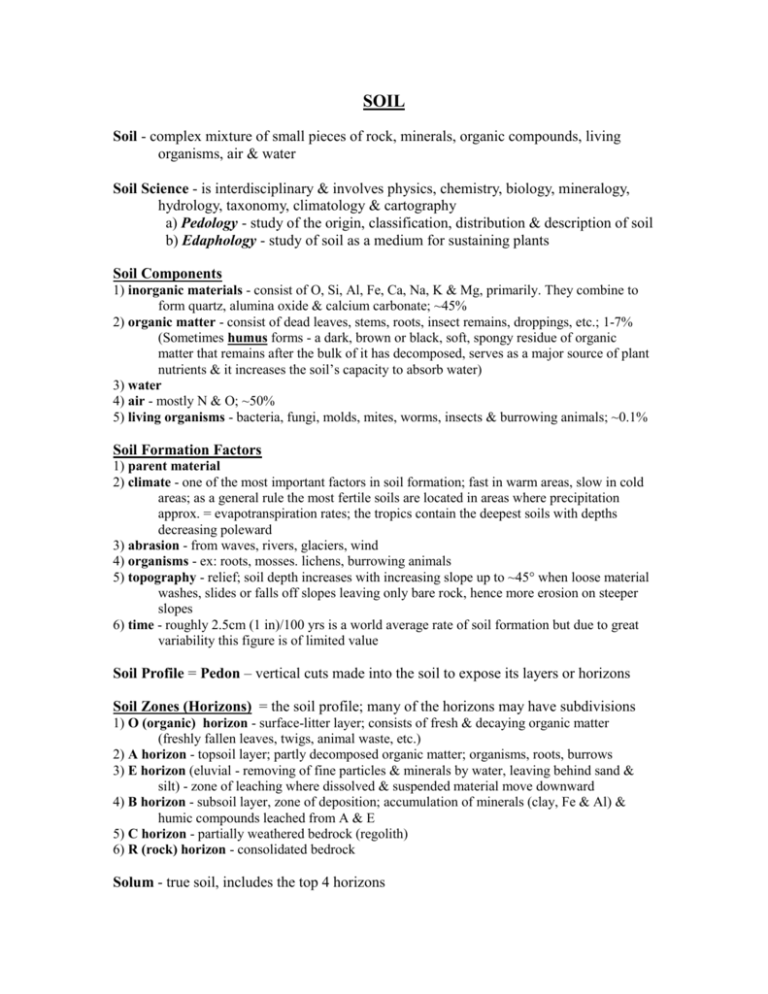GLACIAL EROSIONAL FEATURES
advertisement

SOIL Soil - complex mixture of small pieces of rock, minerals, organic compounds, living organisms, air & water Soil Science - is interdisciplinary & involves physics, chemistry, biology, mineralogy, hydrology, taxonomy, climatology & cartography a) Pedology - study of the origin, classification, distribution & description of soil b) Edaphology - study of soil as a medium for sustaining plants Soil Components 1) inorganic materials - consist of O, Si, Al, Fe, Ca, Na, K & Mg, primarily. They combine to form quartz, alumina oxide & calcium carbonate; ~45% 2) organic matter - consist of dead leaves, stems, roots, insect remains, droppings, etc.; 1-7% (Sometimes humus forms - a dark, brown or black, soft, spongy residue of organic matter that remains after the bulk of it has decomposed, serves as a major source of plant nutrients & it increases the soil’s capacity to absorb water) 3) water 4) air - mostly N & O; ~50% 5) living organisms - bacteria, fungi, molds, mites, worms, insects & burrowing animals; ~0.1% Soil Formation Factors 1) parent material 2) climate - one of the most important factors in soil formation; fast in warm areas, slow in cold areas; as a general rule the most fertile soils are located in areas where precipitation approx. = evapotranspiration rates; the tropics contain the deepest soils with depths decreasing poleward 3) abrasion - from waves, rivers, glaciers, wind 4) organisms - ex: roots, mosses. lichens, burrowing animals 5) topography - relief; soil depth increases with increasing slope up to ~45° when loose material washes, slides or falls off slopes leaving only bare rock, hence more erosion on steeper slopes 6) time - roughly 2.5cm (1 in)/100 yrs is a world average rate of soil formation but due to great variability this figure is of limited value Soil Profile = Pedon – vertical cuts made into the soil to expose its layers or horizons Soil Zones (Horizons) = the soil profile; many of the horizons may have subdivisions 1) O (organic) horizon - surface-litter layer; consists of fresh & decaying organic matter (freshly fallen leaves, twigs, animal waste, etc.) 2) A horizon - topsoil layer; partly decomposed organic matter; organisms, roots, burrows 3) E horizon (eluvial - removing of fine particles & minerals by water, leaving behind sand & silt) - zone of leaching where dissolved & suspended material move downward 4) B horizon - subsoil layer, zone of deposition; accumulation of minerals (clay, Fe & Al) & humic compounds leached from A & E 5) C horizon - partially weathered bedrock (regolith) 6) R (rock) horizon - consolidated bedrock Solum - true soil, includes the top 4 horizons





